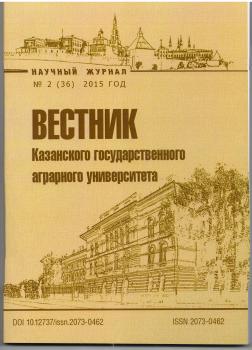Nowadays Russia is on the first place in the world in terms of proven gas reserves. The gas industry has played a strategic role in the economy of our country, and including in the agricultural economy. For the preparation of the information, required for decision- making, you must correctly classification of expenses, which largely depends on the production and management of an organization. The main feature of the gas as compared with the production of solid minerals, is that the gas remains concealed in sealed structures at all stages - after removal from the reservoir to the moment when the consumer enters. All costs of gas companies , like any other organization , are necessary to structure an orderly manner . The standard classification of costs does not exist yet . In order to effectively manage costs OAO “Gazprom” encourages its subsidiaries provide the following types of costs: semi-variable and fixed costs; relevant and irrelevant costs; regulated and non-regulated costs [5]. In our opinion, the above-described classification is the most convenient for the gas-producing organizations. Thus, the analysis can be concluded, that gas production costs of organizations differs in their variety and it requires different methods for management. However, the correct application of the classification of costs will not only determine the degree of influence on the outcome of certain costs of the organization, but also relate to the production costs only those costs, that are necessary for its production and sales. This, in turn, will affect the cost of other organizations, including agricultural companies. The proper use of the classification of expenses is the first step towards effective cost management.
classification of costs, gas producing companies, gas, gas well.
Введение. Газовая отрасль играет стратегическую роль в экономике России. Природный газ в экологическом отношении является самым чистым видом минерального топлива. Он широко применяется в качестве горючего для отопления, подогрева воды и приготовления пищи; как топливо для машин, котельных, ТЭЦ и др.
Из метана, составляющего основную часть природного газа (от 92 до 98 %), сначала получают метанол и далее – формальдегид, используемый для производства пластмасс, обработки семян, дезинфекции. Из метана же получают четыреххлористый углерод, применяемый для борьбы с вредителями в сельском хозяйстве.
Также в состав газа входят гомологи метана: этан, пропан, бутан и некоторые неуглеводородные примеси. Самый известный продукт переработки этилена – полиэтилен. Кроме того, из этилена вырабатывают уксусную кислоту, поливинилхлорид (полимер, используемый для изготовления изоляционных материалов) и др.
Ещё одним направлением переработки газа является получение на его основе белковой биомассы с помощью микроорганизмов. Получаемые белки безвредны для животных и для человека, употребляющего мясо этих животных [1, стр. 15].
В условиях регулирования государством цен на газ, реализуемый на внутреннем рынке, основным путем увеличения прибыли организаций газовой отрасли в части реализации газа на территории России является контроль за уровнем затрат, обеспечение их сокращения, что несомненно отразится и на сельском хозяйстве.
Для подготовки информации, необходимой для принятия управленческих решений, необходима грамотная классификация затрат, которая во многом зависит от особенностей производства и управления в той или иной организации.
Анализ и обсуждение результатов исследования. Газодобывающим организациям присущ ряд отличительных особенностей, влияющих на построение учета затрат, на их классификацию в целях эффективного управления затратами.
Добыча природного газа – процесс извлечения газообразных и жидких углеводородов из недр с помощью технических средств. Основной товарной продукцией газодобывающей организации являются природный газ и газовый конденсат. При разработке газонефтеконденсатных залежей в составе товарной продукции организаций учитываются также нефть и попутный газ.
Добыча газа состоит из следующих технологических процессов:
1. Proselkov E.B., Proselkov Yu.M. Osnovy neftegazopromyslovogo dela: ucheb. posobie / Kuban. gos. tekhnol. un-t. - Krasnodar: Izd. Kub.GTU, 2008. - 224 s.
2. Apcherch A. Upravlencheskiy uchet: printsipy i praktika: Per. s angl./ Pod red. Ya.V. Sokolova, I.A. Smirnovoy. - M.: Finansy i statistika, 2002. - 952 s.: il.
3. Vakhrushina M. A. Bukhgalterskiy upravlencheskiy uchet: ucheb. dlya studentov vuzov, obuchayushchikhsya po ekon.spetsial'nostyam / M. A. Vakhrushina. - 6-e izd., ispr. - Moskva: Omega-L, 2007. - 570 s.
4. Liberman I. A. Upravlenie zatratami. - Moskva: IKTs «MarT», Rostov n/D: Izdatel'skiy tsentr «MarT», 2006. - 624 s.
5. Materialy sayta Gazprom v voprosakh i otvetakh. - Elektronnyy resurs.- http://gazpromquestions.ru/?id=37, Rezhim dostupa - svobodnyy.
6. Metodicheskie rekomendatsii po planirovaniyu i kal'kulirovaniyu sebestoimosti dobychi gaza, Moskva, 2007 g.





